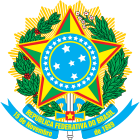| ||||||||||||||||||||||||||||||||||||||||||||||||||||||||||||||||||||||||||||||||||||||||||||||||
|
| ||||||||||||||||||||||||||||||||||||||||||||||||||||||||||||||||||||||||||||||||||||||||||||||||
Presidential election | ||||||||||||||||||||||||||||||||||||||||||||||||||||||||||||||||||||||||||||||||||||||||||||||||
| Turnout | 82.24% | |||||||||||||||||||||||||||||||||||||||||||||||||||||||||||||||||||||||||||||||||||||||||||||||
|---|---|---|---|---|---|---|---|---|---|---|---|---|---|---|---|---|---|---|---|---|---|---|---|---|---|---|---|---|---|---|---|---|---|---|---|---|---|---|---|---|---|---|---|---|---|---|---|---|---|---|---|---|---|---|---|---|---|---|---|---|---|---|---|---|---|---|---|---|---|---|---|---|---|---|---|---|---|---|---|---|---|---|---|---|---|---|---|---|---|---|---|---|---|---|---|---|
| ||||||||||||||||||||||||||||||||||||||||||||||||||||||||||||||||||||||||||||||||||||||||||||||||
 Election by states, shaded accounding to vote share | ||||||||||||||||||||||||||||||||||||||||||||||||||||||||||||||||||||||||||||||||||||||||||||||||
| ||||||||||||||||||||||||||||||||||||||||||||||||||||||||||||||||||||||||||||||||||||||||||||||||
513 seats in the Chamber of Deputies 257 seats needed for a majority | ||||||||||||||||||||||||||||||||||||||||||||||||||||||||||||||||||||||||||||||||||||||||||||||||
This lists parties that won seats. See the complete results below. | ||||||||||||||||||||||||||||||||||||||||||||||||||||||||||||||||||||||||||||||||||||||||||||||||
| This article is part of a series on the |
 |
|---|
General elections were held in Brazil on October 3, 1994, the second to take place under the provisions of the 1988 constitution and the second direct presidential election since 1960.
Elected in 1989, President Fernando Collor of the centre-right National Reconstruction Party (PRN) had resigned in the face of an impeachment trial, resulting in Vice President Itamar Franco succeeding him.[1] Facing a fiscal crisis Franco's government launched the Plano Real ("Real Plan") to stabilize the national economy. With Franco barred from running for a full term, the architect of the Real Plan, Minister of Finance Fernando Henrique Cardoso,[2][3] was chosen by the PSDB to serve as their presidential candidate in Franco's absence. For the position of Vice President, Cardoso selected former presidential Chief of Staff Marco Maciel of the Liberal Front Party (PFL).[4]
Luiz Inácio Lula da Silva, a former labor leader and federal deputy for São Paulo who had narrowly lost the 1989 presidential election, resigned as president of the Workers' Party (PT) to mount a second presidential candidacy.[5] Lula intended to make José Paulo Bisol of the Brazilian Socialist Party (PSB) his running mate as he had in 1989.[6] Bisol was replaced by Lula ally and fellow PT member Aloizio Mercadante on the ticket.[7][8] In the spring of 1994, Lula appeared an overwhelming favorite over Cardoso, leading with 40% to Cardoso's 12% in an April poll, and by a 41% to 17% margin as of May.[9] The Real Plan proved popular among Lula's own voters, with 70% of Lula supporters indicating their support for the Franco Administration's signature policy, and Lula was damaged by his opposition to the program.[9][10]
On election day, Cardoso received 54 percent of the vote, negating the need for a second round. He defeated Lula by over 27 points, still a record margin for a presidential election held under democratic conditions. Cardoso notably won every state in the northeast, a region which would later emerge as the PT's political base.[11] The relative success of far-right candidate Enéas Carneiro, a cardiologist who had never won office before and ran as a member of the Party of the Reconstruction of the National Order (PRONA), was also noted; Carneiro received over 7% of the vote, placing him ahead of many established politicians.[12] Carneiro's vote share was the highest received by a far-right presidential candidate until Jair Bolsonaro's victory in 2018.
- ^ The Associated Press (4 July 2011). "Itamar Franco, Former President of Brazil, Dies at 81". The New York Times. ISSN 0362-4331. Retrieved 2 December 2020.
- ^ Almanaque Abril, 28ª ed, 1995
- ^ SAYAD, João. Observações sobre o Plano Real. Est. Econ. São Paulo. Vol. 25, Nº Especial, págs. 7-24, 1995-6
- ^ "Brazil's new Embraer 70-seat jet rivals small Boeing, Airbus planes". Waterloo Region Record. 30 October 2001. p. C8. Archived from the original on February 1, 2013. Retrieved 8 March 2011.
- ^ "Lula's legacy for Brazil's next president". BBC News. 2010-09-30. Retrieved 2020-12-02.
- ^ "Folha de S.Paulo - PT quer Mercadante para o lugar de Bisol - 27/7/1994". www1.folha.uol.com.br. Retrieved 2020-12-02.
- ^ "Folha de S.Paulo - PT quer Mercadante para o lugar de Bisol - 27/7/1994". www1.folha.uol.com.br. Retrieved 2020-12-02.
- ^ "'Depois da cadeia, Lula dificilmente voltará à política', diz vice da chapa do petista em 89 e 94". BBC News Brasil (in Brazilian Portuguese). Retrieved 2020-12-02.
- ^ a b "Eleição presidencial: o Plano Real na sucessão de Itamar Franco".[permanent dead link]
- ^ Brooke, James (1994-09-14). "Taming of Inflation Buoys Centrist in Brazil Polls (Published 1994)". The New York Times. ISSN 0362-4331. Retrieved 2020-12-02.
- ^ Lapper, Richard (2018-07-03). "It's Lula Forever in Brazil's Northeast". Americas Quarterly. Retrieved 2020-12-02.
- ^ "O retorno de Enéas, ícone da extrema-direita e 'herói' de Bolsonaro". BBC News Brasil (in Brazilian Portuguese). Retrieved 2020-12-02.


